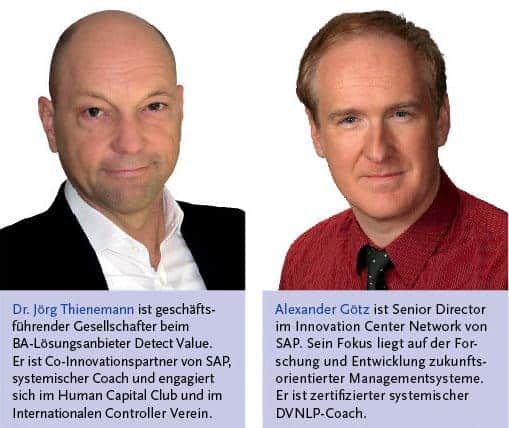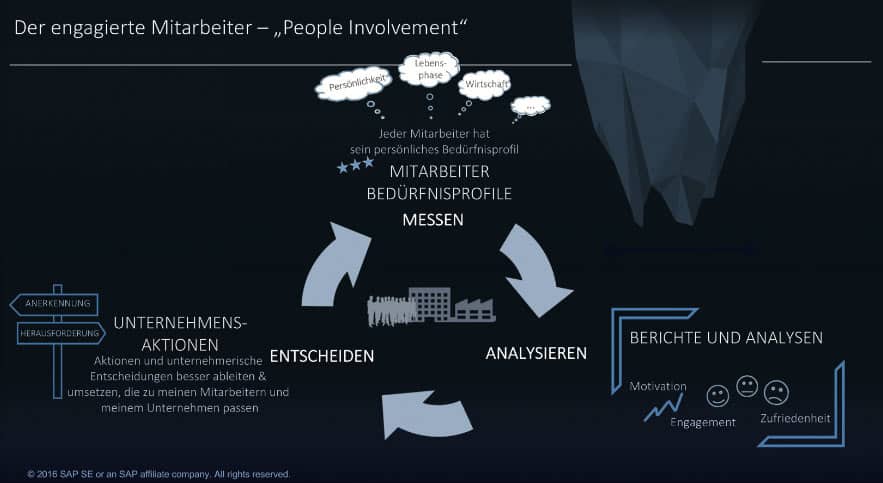Leadership development in digitalization
![[shutterstock:548809000, one photo]](https://e3mag.com/wp-content/uploads/2016/11/shutterstock_548809000.jpg)

Agile organizational forms, self-organization, empowerment and employee motivation require network-like dialog structures and a high degree of interaction.
Managers are increasingly required to think and act in a systemic way, which has to deal with all the more complexity because the actors involved are people with their own interests, thought models and needs.
Managers therefore need new learning methods that place the mobilization of employee potential at the center of their learning success, help them to anticipate constant change, and make it possible to quantify the impact of their leadership effectiveness on the company's success.
One solution could be to offer managers and employees a common platform for mutual dialog.
This should enable constant alignment of employee needs and company actions. Constant feedback loops could support the development of managers on the basis of real-time data.
This form of continuous interaction between managers and employees can sustainably develop a new work and management culture. As part of an SAP research project, a concept and a prototype were developed together with co-innovators.
Data based training
Classic employee surveys or 360-degree feedbacks are already being used today as a building block in the development of managers.
These usually take place only once a year, and the results also have no relation to employee needs or the needs and offerings of the employer.
However, both can change, for example, in the course of life phases, changes in the organization or corporate strategies.
In this respect, annual satisfaction surveys provide little in the way of leadership development.
However, there is currently no solution that supports continuous employee surveys. The SAP co-innovation project therefore investigated the extent to which continuous employee surveys can be implemented that are demand-oriented and support measures.
The focus here was primarily on promoting employee satisfaction, commitment and individual health as core elements for sustainable corporate success.
Employee needs
Such a value-oriented view follows the basic idea of meeting employees with their abilities and potential as partners "at eye level" and activating them for joint corporate success.
Continuous employee surveys can be an important learning tool for the development of managers. By integrating them into the work process, this approach represents a control loop of dialog that can help establish a new leadership culture in the form of on-the-job training.
In order to be able to implement a continuous employee survey, incentive systems are needed that fuel the continuous dialog - similar to a demand-offer system.
For this purpose, new types of needs and action catalogs were developed that enable a "control loop of dialog". They allow individualization, prioritization and weighting and can be flexibly adapted to new framework conditions.
Free text input can also be included and utilized in the dialog with the help of tag clouds.
Feedback loops can be triggered autonomously by employees. Occasions can be, for example, changed living conditions, changes in the organization or employer benefits/actions that affect their own needs.
Managers can use action catalogs to find and propose suitable measures in a timely manner. Since managers are also employees, the same logic applies to them, so they too can express their satisfaction with the employer's performance or even their respective superiors.
Feedback loops can also be triggered as anonymous surveys by the company or by managers.
Over time, continuous dialog across all hierarchical levels produces a clear picture of what moves the workforce and with which actions managers have been successful.
Learning system
A learning system that recognizes patterns and regularities based on the data from the feedback loops will be able to suggest appropriate measures to managers to improve individual job satisfaction.
Continuous measurement of the success of implemented measures will improve future proposals.
The success of measures is measured in terms of employee satisfaction as well as individual health and their positive impact on company key figures.
In addition, a tag cloud visualizes the most important terms of the qualitative text input and thus provides additional information on action points.
In this way, managers can learn at any time in their day-to-day work environment how their operational and strategic decisions about investing in their employees impact employee engagement and business success.
The fact that the system is integrated into the work process and that up-to-date data is available at all times across all organizational units and hierarchical levels enables real-time analyses that make the interdependencies in the overall "organization" system transparent.
In the managers' view, statements are now possible about individual employee satisfaction in the team, team satisfaction, the most successful actions to increase satisfaction and commitment. Likewise about the needs in the team.
Analyses along the time axis allow statements to be made about the development and change in satisfaction, the many reasons for which are now more transparent and can also be evaluated in the corporate context.
Benchmarks between teams are also possible and provide information about differences and their causes. Each employee, which also includes managers, can also see where his or her satisfaction stands in comparison to his or her team or peer group.
Managers thus get a view of the "big picture" and can look at and evaluate things from different angles. They find out what their actions can achieve, see their effect over time and can adjust them if necessary.
In this way, new insights into the effectiveness of one's own leadership style can be gained in a continuous learning process, or one's own ways of acting can be reflected upon.
Traditional, linear concepts of thinking and learning can be broken down and systemic ways of seeing and acting can be promoted.
Conclusion:
The solution approach of data-based leadership development integrated into the work process is not intended to be a pedagogical, sophisticated didactic learning software.
However, it can be an important orientation aid for executives to cope with everyday life - especially in agile and fluid organizations. Through it, leaders learn interactively, on the job, and gain a systemic view of the impact of their actions.
This does not replace the personal exchange among each other, but rather supports it.
Critical to the success of such a solution approach is the continuous use of the system and active interaction in the system. The prerequisites for this are a trustworthy corporate culture and open communication.
The opportunity of such a solution is that it can provide a platform for a learning organization, an organization that learns from each other.
Thinking one step further, as the database grows, it could even be possible to develop intelligent learning content that can be used for simulation purposes in leadership development - similar to how pilots are trained in a flight simulator.
The resulting intelligent business content can also be made available again anonymously and abstractly to all participating companies via the cloud.
Action catalogs can be further developed across companies and can be made available to other companies. In this way, companies also learn from each other.







